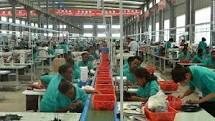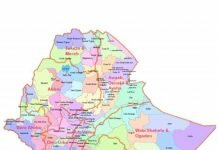
Following the opening of the Suez Canal in 1869 the Red Sea has become one of the most important sea lanes in the whole world. Billions of dollars worth of goods including oil are being transported through the Red Sea which facilitates quite a robust trade between the West on the one hand and the Middle East and Asia in general on the other hand.
What is, however, easily noticeable is the fact that the countries adjacent to the Red Sea, particularly those on the African side are mere observers of this huge trade flowing relentlessly in front of their noses but are not part of it in any meaningful manner.
For all intents and purposes, the Red Sea is, as far as the adjacent countries are concerned, a huge ocean keeping them apart instead of serving as a medium of collaboration and mutual support. Unlike the Arab Gulf Cooperative Council which brings together Arab countries adjacent to the Persian Gulf, the Red Sea is being utilized merely as a trade sea lane for the rich and the powerful in the West, Asia and Australia.
POTENTIAL BENEFITS FOR COLLABORATION
Immense benefits could accrue to all the countries surrounding the Red Sea only if the governments were to come together and chart out an appropriate strategy and action plan to make full use of the huge resources that the region as a whole could offer for the benefit of their peoples currently totaling 200 million and increasing to over 400 million in 20 years.
Among the potential benefits of collaborating in the context of a Red Sea Cooperative Council, the following could be sited as examples:
- The existing mutually advantageous resources among the adjacent countries e.g. oil and investment on the Arab side and agricultural, mineral, water, and human resources on the African side could be exploited for a common advantage;
- The mostly underdeveloped eleven sea ports around the Red Sea could be upgraded to provide, similar to Dubai, Singapore, etc. international standard maritime service thereby bringing in increased trade and employment;
- The utilization of the Red Sea for common advantages would render it a region of peace instead of the current situation which has made it an area of serious potential dangers involving, on the one hand, France, Israel and the United States, and Iran on the other hand;
- The peace and stability that could prevail as a result of a sustainable collaboration among the countries adjacent to the Red Sea could go a long way in alleviating the current state of conflict, grinding poverty, and endemic diseases such as malaria and TB;
- The underdeveloped but huge resources especially on the African side such as water, agriculture, minerals, and the environment could be put to a better advantage for the benefit of the region’s people as well as for the international community;
- Effective utilization of the region’s resources as well as the achievement of peace and stability in the region could relieve the international community from the perennial demands for financial and other assistance;
- The achievement of a sustainable development through an integrated or a holistic development strategy that spans all the countries in the Horn of Africa (Djibouti, Eritrea, Ethiopia and Somalia) as well as Egypt, Israel, Saudi Arabia, and the Yemen would bring about a level of prosperity that would, among other things, avoid making the region a breeding ground for international terrorism.
FACTORS MITIGATING AGAINST COLLABORATION
There are, unfortunately, serious underlying constraints mitigating against a meaningful collaboration among the countries adjacent to the Red Sea. The constraints are so inhibiting that the whole idea of collaboration in the region appears, at least at this stage, highly speculative and a virtual pie in the sky. Evidence of the negative line of thinking includes the presence of military contingents of Saudi Arabia and the United Arab Emirates in Eritrea as well as the expected Turkish military contingent in Somalia. Such a line of thinking, however, merely subscribes to the current state of affairs in which countries in the region continue to be at loggerheads among each other thereby perpetuating conflict and poverty.
In order to move towards the higher objective of collaboration in the region, it is essential to identify the challenges clearly and meet them headlong. Otherwise, there would be no prospects of achieving peace and development in the region. The underlying challenges facing the region at the moment include:
- The myopic interests of the international community; for instance:
- China which is merely interested in short-term gains: selling its services and obtaining some natural resources;
- India which is interested in obtaining land at give-away rates in Ethiopia;
- The Arab Gulf countries which are, in the most, intent on short-term gains including exporting Wahabism to Ethiopia;
- Europe which seems to be interested in keeping the region at bay and selling its products at a very minimal level;
- USA which appears to be satisfied with keeping the region under its control against international terrorism;
- Japan which is satisfied in selling its products also at a minimal level;
- The absence of good governance, rule of law, and respect for human rights in the region and the prevalence of a huge system of corruption;
- The ineffectiveness of the international and regional organizations such as the
UN, AU, IGAAD, etc. in dealing with the serious economic, social
and political challenges resulting from the obviously flawed policies of the
various governments;
- The presence of leaders in the region that are intent on merely subjugating their
respective people and have no qualms about perpetuating a state of conflict with
their neighbors;
RED SEA AS A REGION OF PEACE AND DEVELOPMENT
Even a cursory look at the Red Sea region’s history, and current status, will reveal that it is marked with conflict, continued tension, and the absence of any mechanism or institutional framework for collaboration. Egypt and Ethiopia have engaged in over ten wars with each other. They had occupied each others’ territories. Ethiopia had occupied parts of Saudi Arabia as well as Yemen for centuries at the beginning of the first millennium. Ethiopia and Somalia have engaged in devastating wars. Over 70,000 people have died as a result of the recent war between Eritrea and Ethiopia. Religious fundamentalists supported by Arab sources have caused huge conflicts within Ethiopia and Somalia.
On the other hand, there are also positive aspects that could be considered a harbinger of peace and development in the region. Examples of these include the first Muslim refugees from Mecca to Ethiopia when they were persecuted there and directed by Prophet Mohammed himself to flee to Ethiopia where they would find adequate protection. Over 100 of the Muslim refugees including Prophet Mohammed’s daughter, Rockeya and her husband, stayed in Ethiopia and returned to Mecca when peace prevailed there. Another important example is the fact that 86% of the water that cascades to Egypt in the form of the Nile river emanates from Ethiopia. In addition, Ethiopia is currently engaged in the development of hydropower and wind energy that would be of benefit to the region. Taking into account the huge water quantity that evaporates from the Nile River and the water that flows out of the Nile Delta into the Mediterranean Sea, it is reasonable to consider the possibility that even if part of this resource could be saved, it could be utilized by those nations such as Israel and Saudi Arabia whose needs for water are bound to increase in the future.
Despite the above positive examples, however, the extent of collaboration and mutual benefit from the region’s huge natural and potential resources is unfortunately highly limited. What reigns supreme in the region is mutual animosity, suspicion, tension, intolerance instead of collaboration for mutual benefits.
NEED FOR A RED SEA DEVELOPMENT COUNCIL (RSDC)
It is, therefore, time for the governments and people of the region to consider forming a mechanism for a full collaboration among themselves. This could be in the form of a Red Sea Development Council (RSDC) with a vision for peace and an accelerated development in the region. RSDC could formulate the region’s policy, strategy, and action plan (short-, medium, and long-term) focused on the achievement of the fullest stability, democracy, and an accelerated socio-economic development.
In order to achieve a practical meaning to the fundamental concept behind the principles of RSDC, arrangements could be made whereby regional frameworks of collaboration could be established on issues of mutual interest such as research, trade, industrial activities, social services including regional sports programs, intellectual services, communication such as joint television, radio, internet, and other media operations.
In order to avoid any semblance of hegemony on the part of any country within the RSDC, it would be essential to ensure that institutional mechanisms are established including internationally agreed legislations, policy declarations and institutional arrangements so that all member countries are treated in an equitable manner. This should include the establishment of RSDC Centers in all member countries, chairmanships of RSDC annual conferences on a rotating basis by heads of the various member governments.
The establishment of a Red Sea Region with a leadership having a clear vision, strategy, and an action plan (short-, medium-, and long-term), in a democratic context could engender a lasting peace and an accelerated development that could place the region among the major partners on the global level. The region would thus finally extricate itself from being one of the areas of tension, poverty and under-development (on the African side), and exporter of fundamentalism (on Saudi Arabian side), to an era of a lasting and sustainable peace and an accelerated development.











































